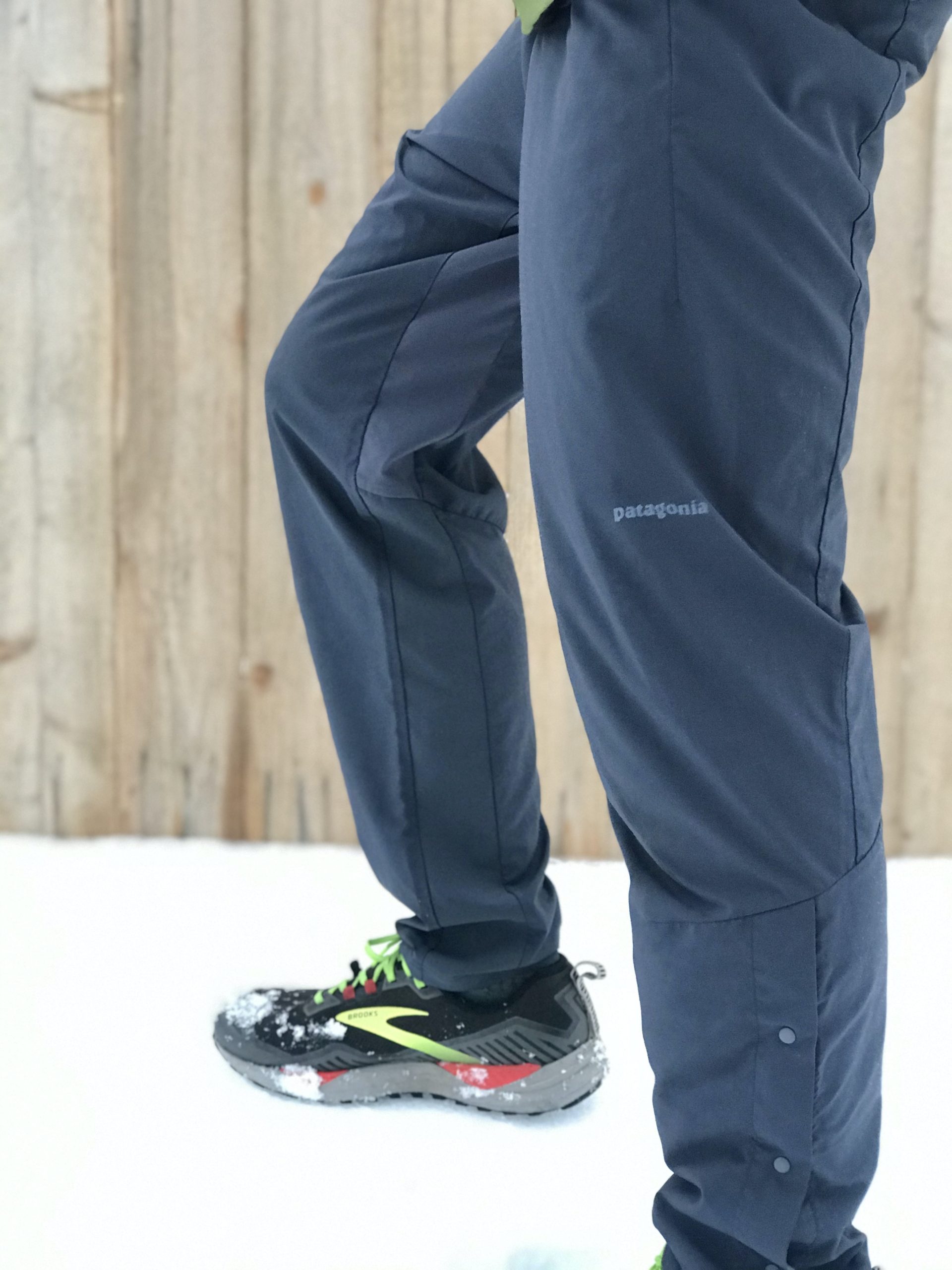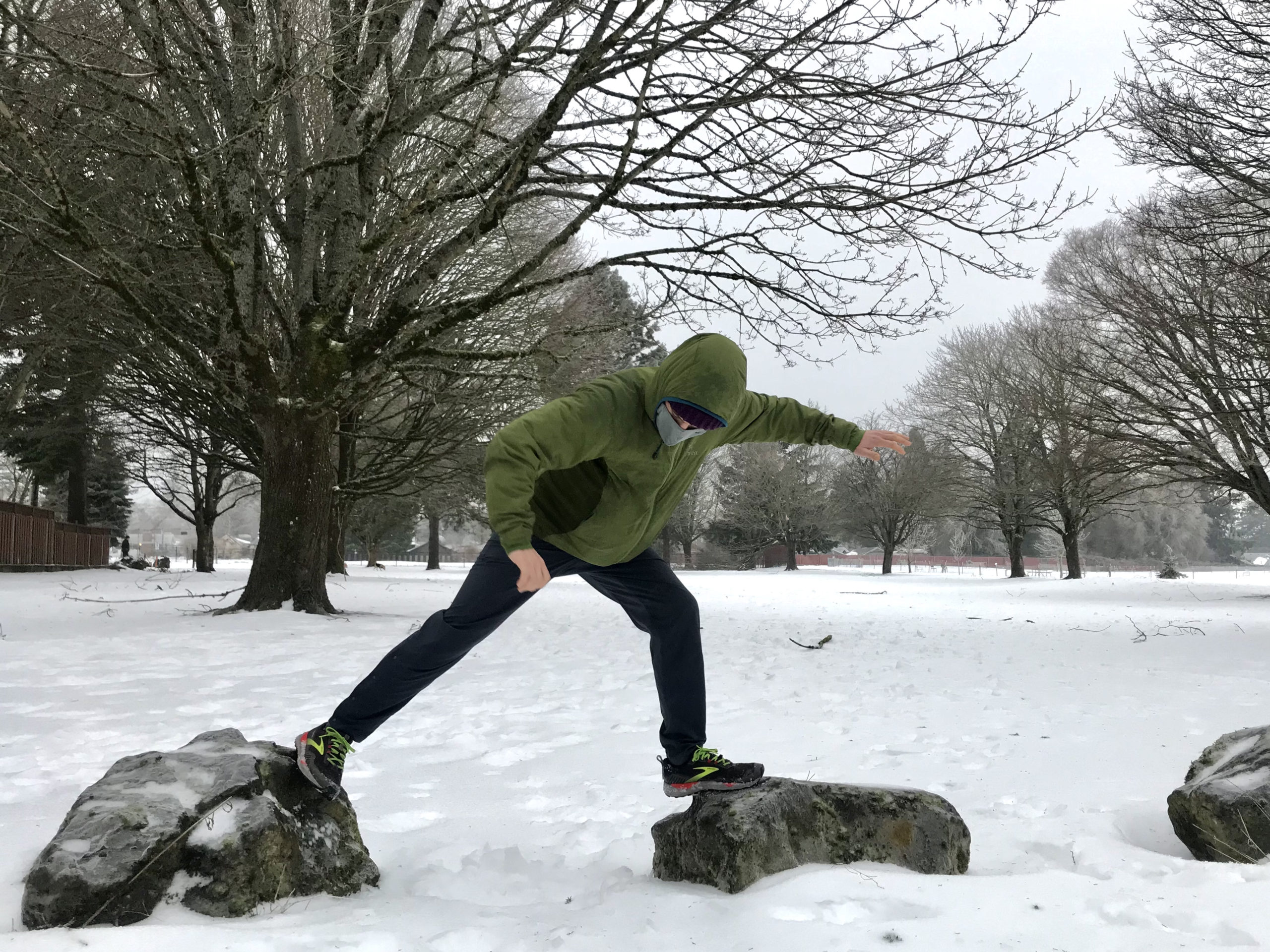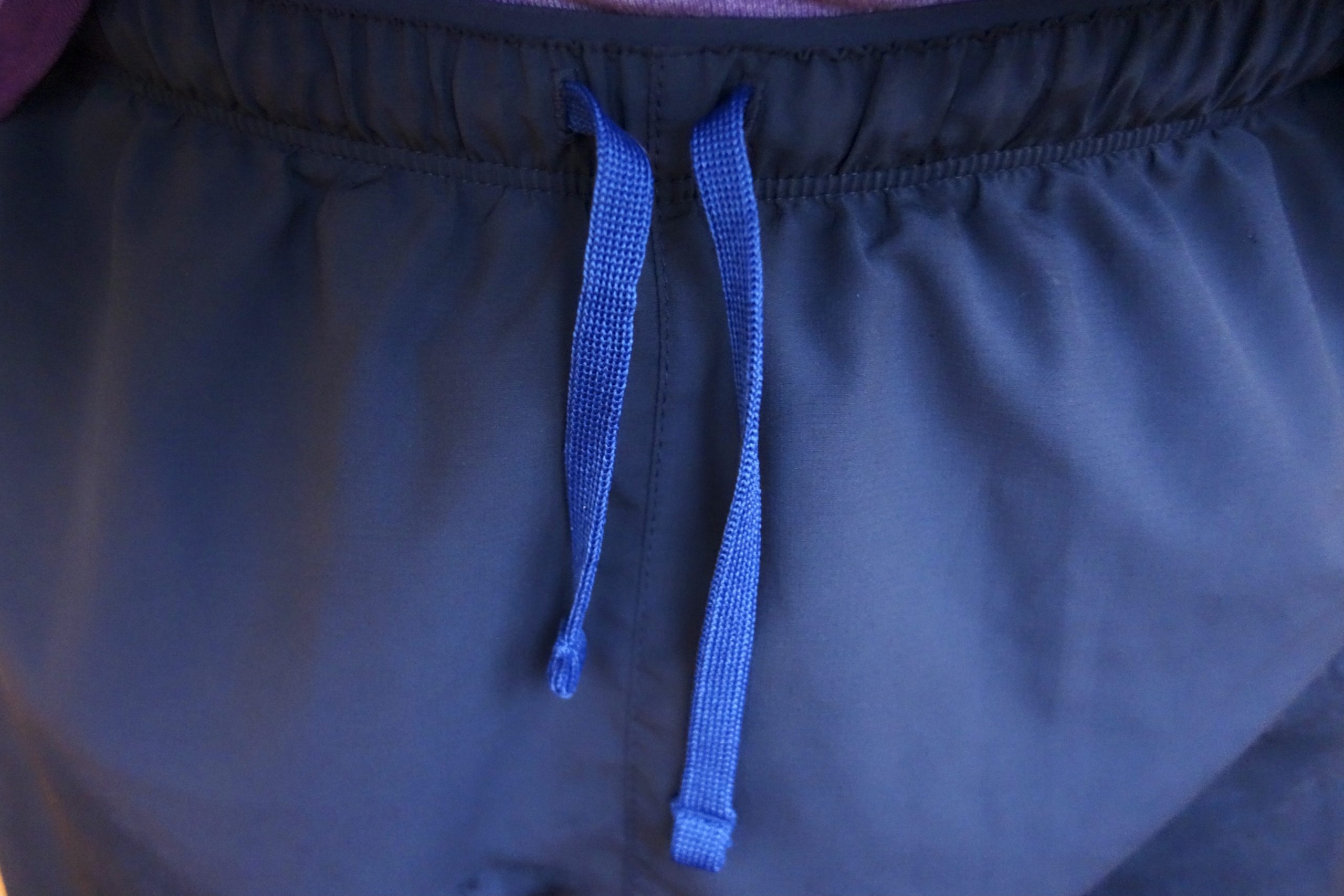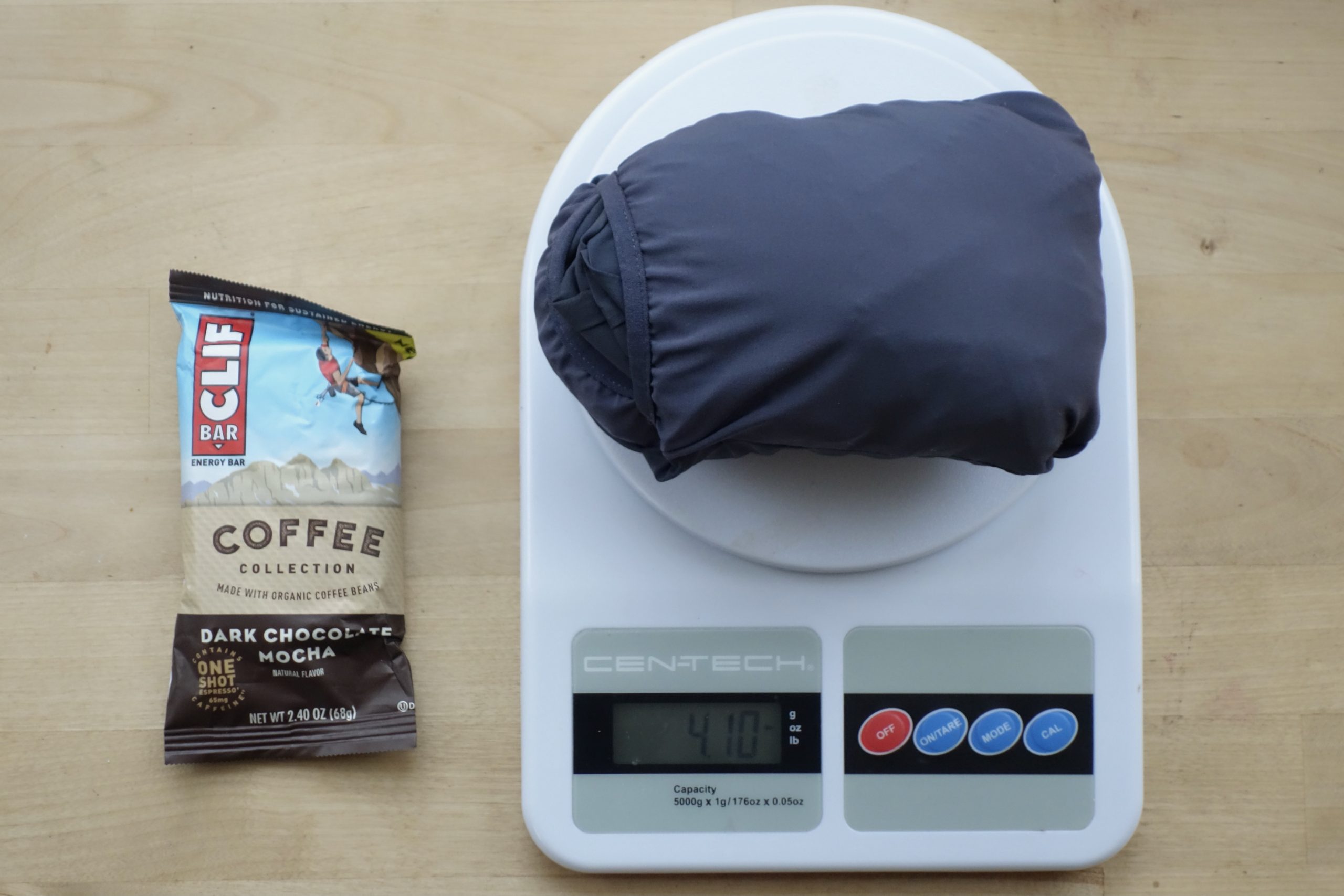Patagonia Strider Pro Wind Pants Review
Your Big Three, footwear, resupply strategy, puffy jacket, rain jacket, water treatment, headlamp, map app, nail clippers, taxes. What do all these things have in common? They are more exciting to think about than lower body layering. Shorts are a great option for the majority of the summer hiking season. Leggings too. But when the temperature plummets or wind whips, what do you do? What if it’s warm and buggy?
In the past, I’ve staggered along in a strange limbo between shorts and rain pants that leaves space for a figurative Grand Canyon-full of discomfort and misery. Rain pants block the wind, rain, and bugs, but they’re clammy and generally awful. Sure, they saved my life during a miserable week in Washington on the PCT, but I ditched them ahead of the CDT. I was done.
The answer, I discovered, is wind pants. This do-it-all layer is far from perfect, but it does most things well enough to keep me comfortable when shorts just won’t cut it.
From trail running to trail hiking
Patagonia’s Strider Pro Pants are not wind pants per se, but they fit the function while providing more features. Pulled from the company’s trail running collection, they are built to log long miles while maintaining minimal weight. Sound familiar? A slim fit combined with stretchy panels promises to be both more comfortable and functional than notoriously baggy shell layers. Recycled materials promised to soothe my tortured conscience. The simplest wind pants have already earned a place in my base weight, and now I wonder if I was missing something all along.
Patagonia Strider Pro Pants At-a-Glance

The Strider Pro pants are not simple pants. Notice the plethora of carefully designed panels that result in a well-fitting, functional garment.
MSRP: $129
Type: Wind pants
Material: 100% recycled polyester ripstop with DWR
Weight: 4.1 ounces (size small, measured)
Pocket: One internal pocket
Country of Origin: Fair Trade Certified sewn in Vietnam
Intended Use
The Strider Pro Pants and shorts from Patagonia are designed for long technical runs on the trails of this world. The pants specifically are built to function as an extra layer on cold mornings or when conditions change out in the mountains. They stuff small and are light enough to bring along with even the slightest chance that they’ll be useful. The lightweight fabric breaths well while cutting the wind and repelling light moisture, and is not intended to keep you dry. In essence, the Strider Pro pants are wind pants designed for epic trail runs. Fortunately for us, an epic trail run shares a lot in common with an epic thru-hike.
Circumstances of Review
I’m a dude who takes way too much pride in wearing shorts for hiking, running, or biking in all conditions. Winter in the Pacific Northwest has put my stubbornness to the test and, with the help of the Strider Pro Pants, I’m finally coming around to the good sense of covering up my sticks.
Over the past few months, these pants have mostly served me well on runs in the knee-aching cold of morning. They’ve also seen their fair share of precipitation as I pound the pavement or splatter through mud on the trail. I’ve put their wind resistance to the test on frigid bike rides, and gauged their loungeability when my spirit has wavered. I’ve put these pants through a lot, more than they’re designed for, so I know they’ll be trail-worthy when the hiking is prime.
Patagonia Strider Pro Pants Features
Recycled fabric: The main body of the pants are made with 100% recycled polyester. The rear and lower leg panels combine recycled polyester and nylon with spandex to provide extra stretch.
Slim fit: The Strider Pro pants are built for running, and so Patagonia cuts excess fabric to give them a slim fit. This is most pronounced in the lower leg, which taper to close-fitting ankles. They’ll still accommodate a base layer, and I’ve successfully worn them over my usual hiking shorts.
Stretch paneling: The slim profile of these pants would feel restricting if not for the stretch panels on the back of the leg and inseam. With these bits of extra spandex, there are minimal restrictions when tackling large steps or pulling other super athletic moves that we hikers are known for.
Buttoned ankle cuffs: Keep your shoes on when adding or removing this layer. Snap buttons on the outside of the lower legs open up the ankles for quick exchange when conditions change.
Internal pocket: The stretchy internal pocket located inside the rear waistband can hold a reasonably sized phone or be used as a stuff sack for the pants themselves. Good for stashing the essentials during a long run or a hiker hunger-sized grocery haul.
Comfort
These pants are darn comfortable. Even though I try to reserve them for their intended use, I find myself lounging on the couch in these bad boys with growing frequency. The stretchy waistband lies flat without digging in, even under a hip belt, and the lightweight fabric has that pleasant flowy feeling of the finest summer garb.
Fit and Sizing
The benefits of the trim fit that makes these pants good for running carry over to slower forms of locomotion on the trail. They are stretchy enough to move without restriction and there is little excess material or bagginess to get in the way. No tripping over your ankle cuffs with these things. The pants stay cleaner too.
While I think the fit of the Strider Pro is great for my purposes, others might find it limiting. Layering anything bulkier than leggings underneath is pushing it, and the seat of the pants fills up pretty quickly with just my board shorts underneath. Again, the stretchy panels do a good job of preserving mobility, but those who prefer a looser fit or need space for more layers will feel restricted.
As far as sizing, Patagonia’s size chart is helpful and accurate. The elastic waistband and drawcord comfortably take up any slack in the imprecise XS—XXL sizing choices, and will accommodate my waistline fluctuations as I first burrito-bulk for my next thru-hike, then dwindle down despite a disastrous disregard for distancing from dietarily dubious delicacies.
DWR Performance
The efforts of the DWR finish to repel light moisture are admirable, yet ultimately fruitless in any kind of consistent precipitation. The thin fabric wets out after a few minutes around the quads and knees, at which point all warmth-saving properties disappear. Intermittent drips bead up and roll off, but the Strider Pro pants are no substitute for a true rain pant. The flip side is that the fabric also dries quickly once the rain stops.
Pros
Lightweight: There are lighter wind pants out there, but it’s hard to get too angry about carrying something that weighs less than two Clif Bars. The spandex and button cuffs add an ounce or two, yet transform these pants into a truly functional layer that is designed to be worn, not carried.
Packs small: As expected from such a minimal layer, these pants pack down to nothing. They easily disappear into the crevice between food bag and shelter in my backpack. The single pocket also serves as a stuff sack for those that like to keep it tidy.
Wind protection: These are wind pants, and they do what wind pants should do. They block the wind, which is sometimes all it takes to stay comfortable.
Recycled materials: Patagonia designed the heck out of these pants, which means that there are different blend ratios of polyester and spandex all over the place. However, the important thing is that 100% of the poly is recycled. Makes that trash useful again and keeps it from the landfill.
Quick-dry: Polyester absorbs less water when wet than nylon. As a result, the mostly polyester construction of the Strider Pro dries out in a flash when the precipitation stops.
Athletic fit: Wind and waterproof layers aren’t known for their stretchiness and so must be sized appropriately baggy to accommodate a full range of motion. That works, but there’s always a bunch of extra fabric swishing around. With the addition of stretch panels, Patagonia was also able to trim the excess material, thus making the Strider Pros look better and better suited to both running and hiking.
Company activism: Patagonia has been on the leading edge of company activism, environmental stewardship, and ethical/sustainable business practices and products for an awfully long time. Buying new gear comes at a cost greater than the price tag suggests, and Patagonia has done a lot of work to minimize the invisible consequences.
Cons
Price: $129 is a lot to spend on a layer that might see infrequent use. That’s the kind of number that convinces me that I don’t need wind pants at all, and there are cheaper options out there. However, the Strider Pro pants are designed to be functional in a way that simpler pants are not. The precise fit and stretch panels will help them last comfortably for the long miles ahead. On the right trail the investment will be worth it.
Snap buttons: Snapping open the cuffs is a sweet feature of these pants, but as someone concerned about ticks, I would prefer a zipper. This is a pretty specific nitpick that shouldn’t concern a ton of folks.
Color options: I’m not against “Smolder Blue” (aka grey), but I am a fan of choice. Patagonia is no stranger to offering a veritable cornucopia of fabric colors and I would like to see them let loose with the Strider Pro.
Slim fit: The fit is a pro for some while potentially excluding others. It’s hard to make everyone happy, and Patagonia chose to focus on a very specific group here.
Limited pocket: I’m a fan of pockets. It’s why I hike in board shorts instead of running shorts. I dig that the Strider Pro pants have a pocket at all. However, it’s awkward to use and certainly won’t work under a hip belt. That’s what I get for using running pants for backpacking.
Final Thoughts
Patagonia’s Strider Pro Pants represent a wholesale upgrade to my CDT wind pants, color withstanding, which were essentially two tubes of purple nylon stitched together with elastic at the openings. The key is that Patagonia designed them to be used. They’re not just a backup layer. Conversely, the lightest and most basic wind pants are built to be carried in a pack, deployed only infrequently, and so lack functional fit and features. When the sun is low or the wind is howling, I will wear the Strider Pro pants. Before, I would wear my shorts and hope that I could survive without wind pants.
The cost and weight of the Strider Pro Pants are a little high relative to the competition. However, I find it easy to justify this inflation based on the boosted complexity and function of the design, and the responsibly sourced and sewn materials. This is a layer built for a purpose. If you share in that purpose, there is little left to be desired. Simple, thoughtful, comfortable, functional, with known limitations. The Strider Pro Pants will go the distance.
Shop the Patagonia Strider Pro Pants at Backcountry
Similar Wind Pants
Enlightened Equipment Copperfield Wind Pants
MSRP: $75
Weight: 1.35 ounces
MSRP: $79
Weight: 2.8 ounces
MSRP: $70
Weight: Unlisted
MSRP: $20
Weight: 3.5 ounces
This website contains affiliate links, which means The Trek may receive a percentage of any product or service you purchase using the links in the articles or advertisements. The buyer pays the same price as they would otherwise, and your purchase helps to support The Trek's ongoing goal to serve you quality backpacking advice and information. Thanks for your support!
To learn more, please visit the About This Site page.










Comments 2
Hi Owen,
Great article and directly relevant to my needs, I have been thinking about picking these up for my upcoming thru of the CDT in 2022.
How would you rate the wind resistance and breathability of these pants? Have you done the darth vader test on them? Do they cut the wind similarly to other hiking wind pants?
My thinking is that I will carry these in lieu of rain pants, as I have used this method effectively with other softshell pants and been more comfortable than rain pants even with wet legs. Do you find that the wind resistance and fabric of the pants still maintains warmth when hiking in the rain?
Any issues with the spandex sections not blocking wind?
Thanks!
Awesome, I think that wind pants are a great option for the CDT. I got a ton of use out of mine on that trail.
I would say that any difference in breathability and wind resistance between the Strider Pro and other wind layers is minor. The breath test has just concluded, with the results mostly inconclusive. If anything, I would say the Strider Pro fabric is a touch more breathable than a Patagonia Houdini wind jacket and Body Wrapper pants, but it’s not much of a difference at all. Now, the spandex stretch panels are definitely less wind resistant than the pure polyester, but I’ve never felt like the wind was gusting through at the inseam. I’d say that the button cuffs do a lot more to reduce wind blocking than the spandex. If the wind blows just right, the shins can billow. All that said, I haven’t been disappointed with either the breathability nor wind blocking capabilities of these pants. They do the job.
When they get wet, these pants, like other thin wind layers, don’t add much warmth if the fabric is contacting bare skin directly. Paired with even just a thin base layer, though, they will keep you a lot warmer by virtue of reduced wind chill, even when wet.
I hope that helps and have a great time on the CDT!